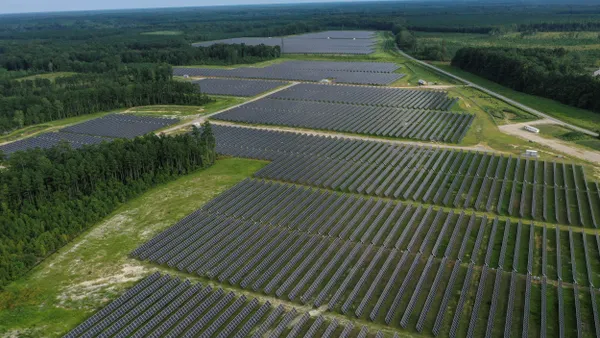Dive Brief:
- A preliminary review of Salt River Project solar owners since the public utility imposed a demand charge in 2015 shows 14% are saving money by adjusting their usage, but the rest are not responding to the price signals by shifting consumption away from the utility’s peak demand period, the Arizona Republic reports.
- Those customers are paying significantly higher bills, and these findings could guide utility regulators as they decide on UniSource Energy Services' request for a similar demand charge for its solar customers.
- The review showed that 190 customers in SRP territory who installed solar since the demand charge was imposed paid a monthly bill of $181 without solar, which then fell to $122 after installation and the demand charge. Previously, rooftop solar customers paid $93 with retail rate net metering.
Dive Insight:
Arizona's solar landscape is heating up again as the Arizona Corporation Commission considers a residential demand charge from one of its smaller utilities, UniSource. The Arizona Republic reports that the state's dominant utility, Arizona Public Service Co., is likely to request a demand charge later this year.
SRP's demand charge last year sparked ire from solar advocates and solar developers like SolarCity, who claimed it reduced about 95% of new applications for residential solar in SRP's territory.
Solar advocates insist that utility calculations fail to include solar’s value to the overall system and lead to unfair conclusions about what to charge for solar.
Residential demand charges are becoming an increasingly popular option as a rate reform tool that could help them manage distibuted energy resources (DERs). But demand charges have come under fire for a number of reasons, including being too complex for everyday consumers to understand.
Supporters of the demand charge said the rate is "technologically agnostic," and can be applied equally regardless of technology.
Demand charges will "allow customers opportunities to save on their bills,” said Greg Bernosky, APS’s director of state regulation and compliance. “Especially for solar customers, there are emerging technologies that allow keeping an eye on peak demand to get to those savings. We have seen a lot of customers save when they move to a demand rate.”
Still, demand charges can open up opportunities for other technologies, particularly energy storage. Last year, GTM Research analyst Ravi Manghani told Utility Dive that “any kind of net energy metering reform that reduces the value of solar works in favor of storage."














